The Bruneau Sand Dunes
The Bruneau Dunes are perhaps the most bizarre natural phenomenon in the state. Trapped in a low-laying basin just south of Mountain Home, they’re thought to have originated during the Ice Age, in the aftermath of the Bonneville Flood. Unlike most sand dunes, those at Bruneau don’t shift dramatically with the wind. They’re trapped in the basin, and the highest peak stays at about 470 feet year-round.
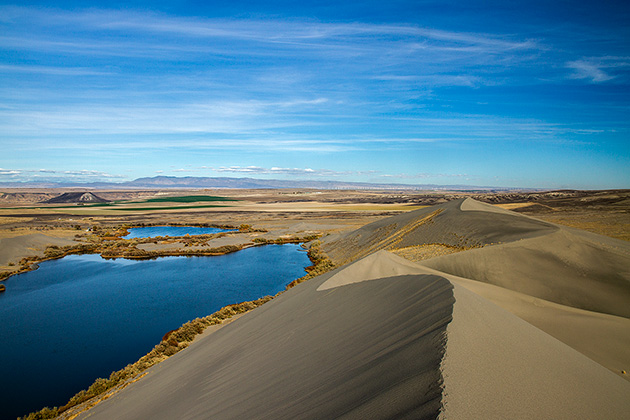
We parked our car near the foot of the dunes at a small lake and, after walking through a wetland forest, began our ascent. 470 feet sounds manageable, but we started having trouble well before reaching the top. Sand is never easy to walk on, and Bruneau has particularly loose sand which can gobble a leg up to the knee. It took about thirty minutes of tiresome crawling before we made it to the top.
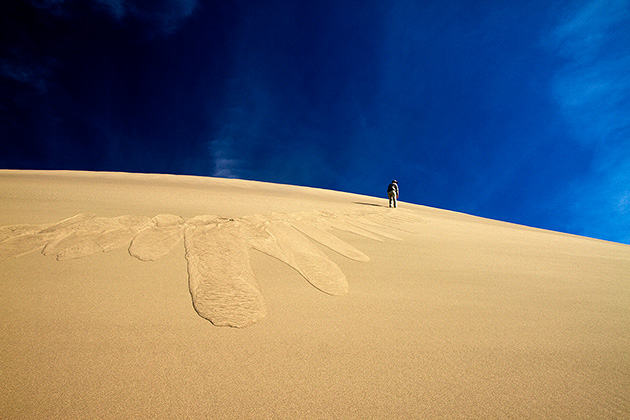
Our shoes, clothes and mouths were filled with sand, and our thighs and calves were burning from the exertion, but I felt only glee upon cresting the summit. Yes, the view was remarkable, but most importantly: we were standing on top of North America’s biggest sand dune, and we’re about to run down. The softness of the sand, so troublesome on the way up, now beckoned to me: “Jump! I am so very soft!” And jump, I did. Jumping, rolling, sprinting, leaping through the wonderfully soft sand, it took about 20 seconds to reach the bottom.
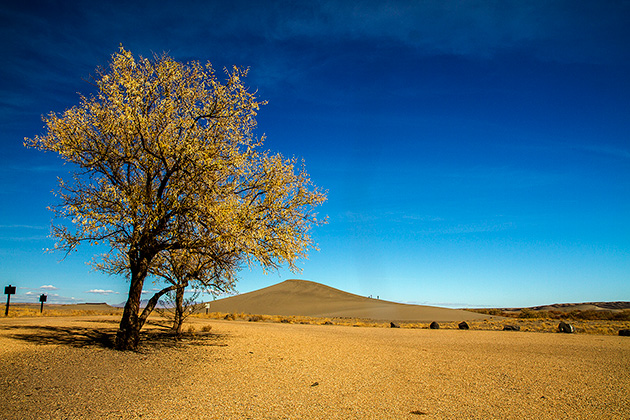

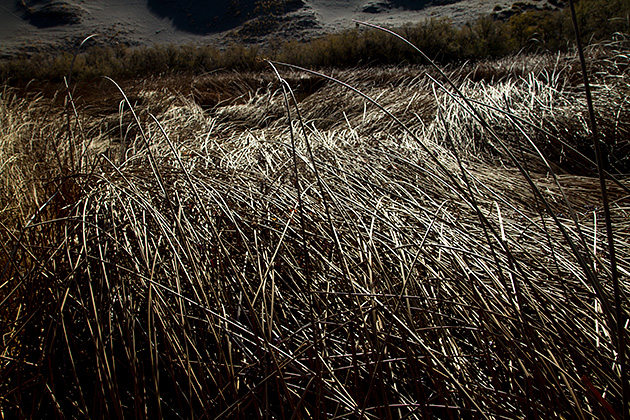
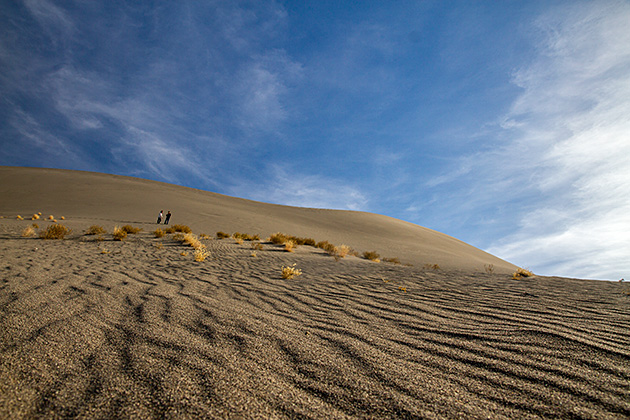
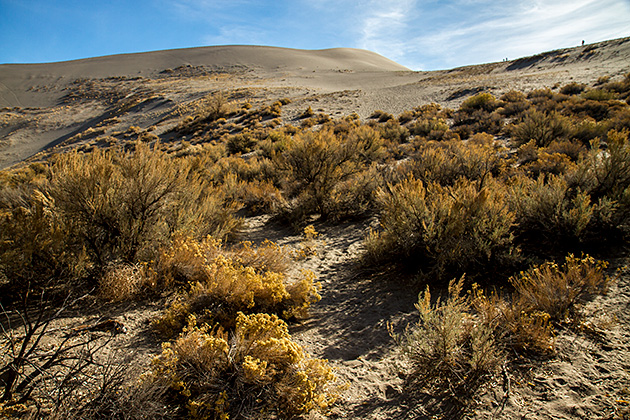
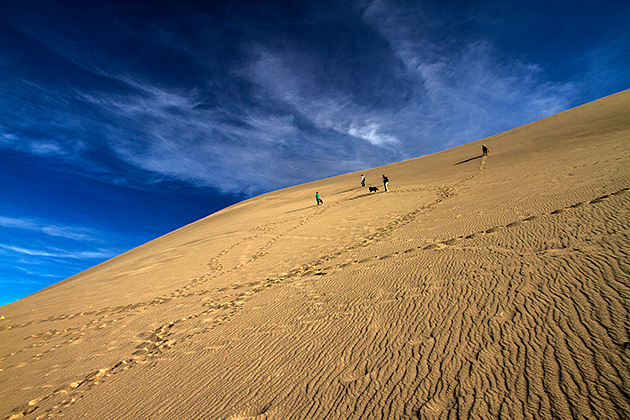
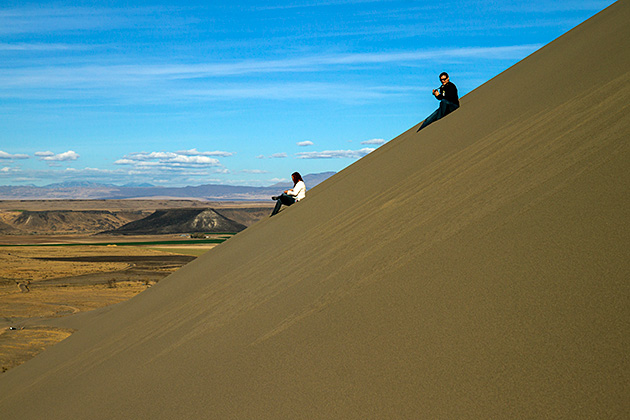

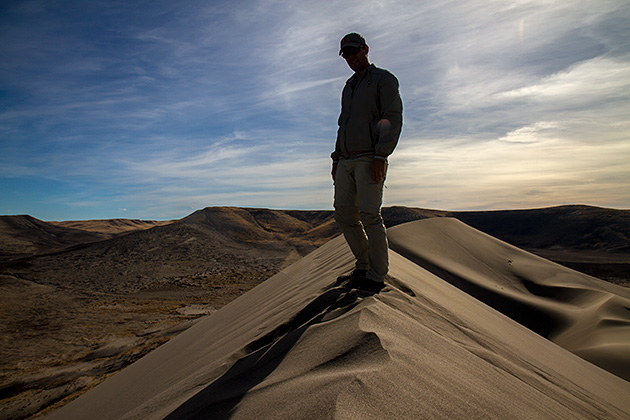

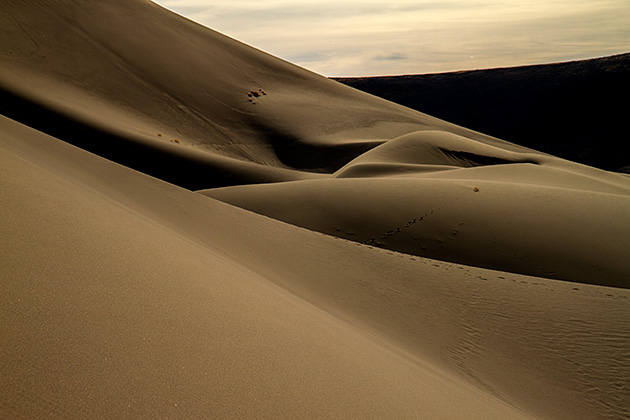
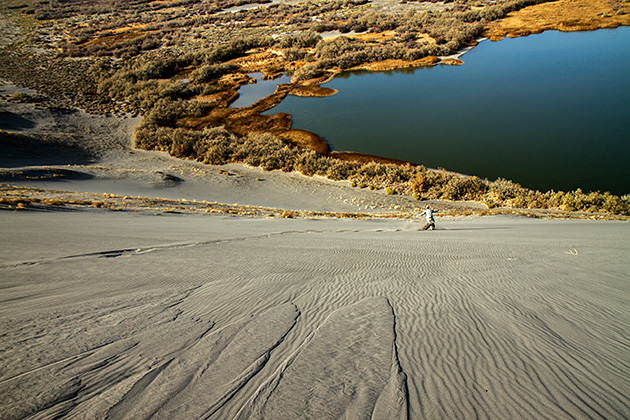
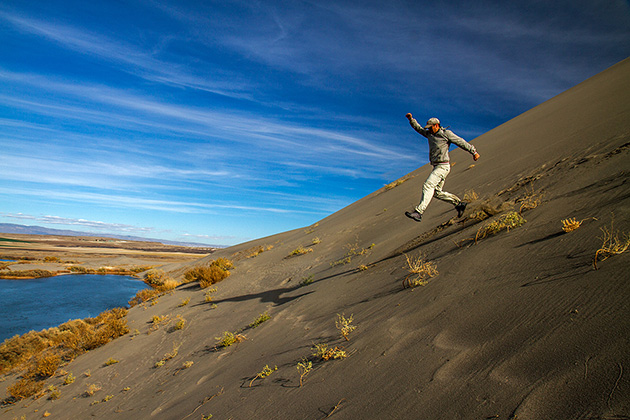
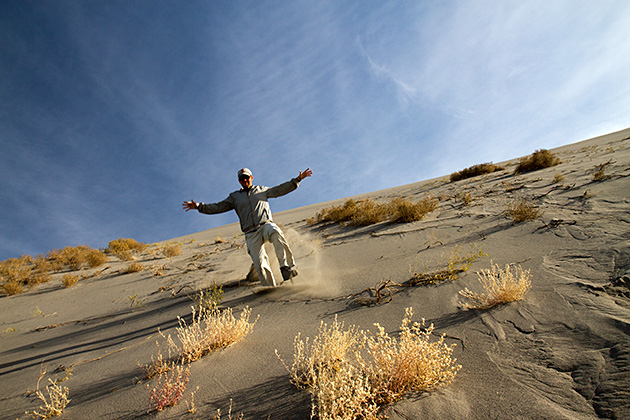
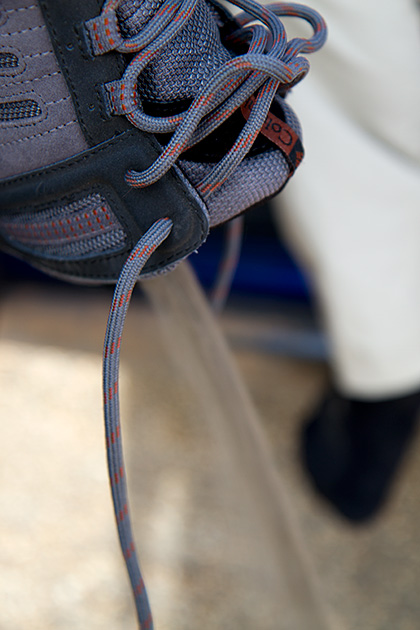
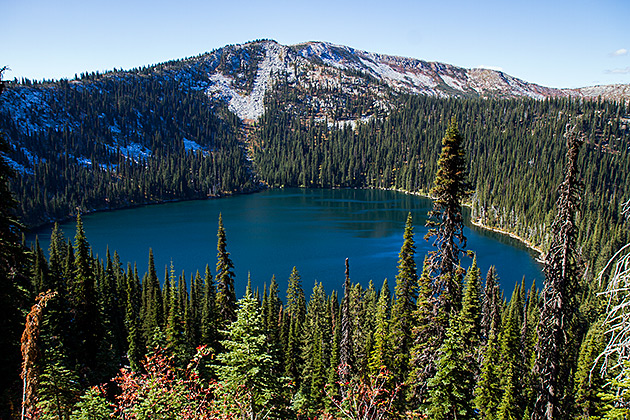
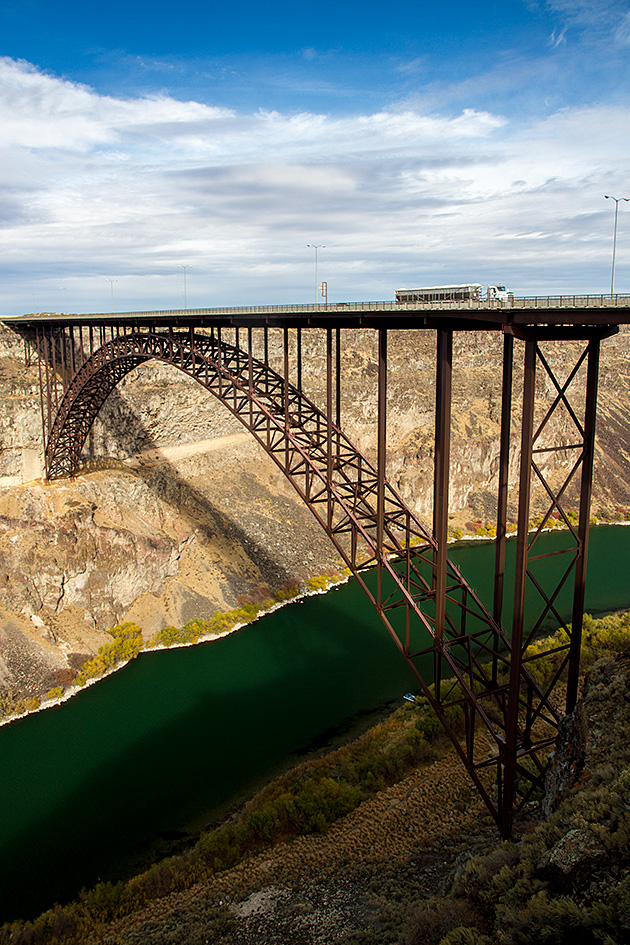
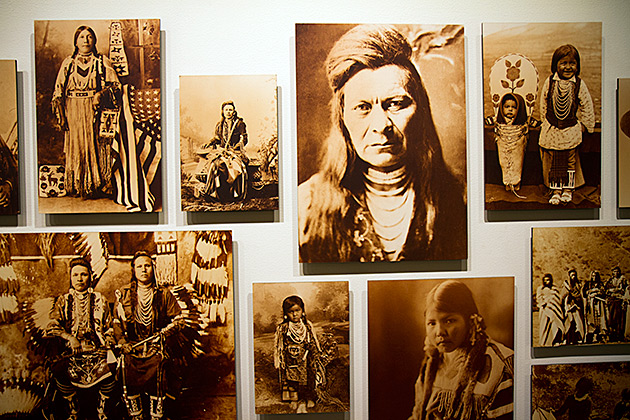

It is fun isn’t it?Love the last shotof pouring sand out of your shoe, (I just go barefoot.) I took my nephew once so that we could catch a star party, since there is very little light pollution out there. It was but an hour’s drive after work from Boise. We grabbed a picnic and pitched a tent at the park campground. Sunset or sunrize on the dunes is best for the grains to pick up those pretty rose and orange hues. The telescope and amateur star gazers were awesome telling us about the galaxy and showing us amazing starry sites.